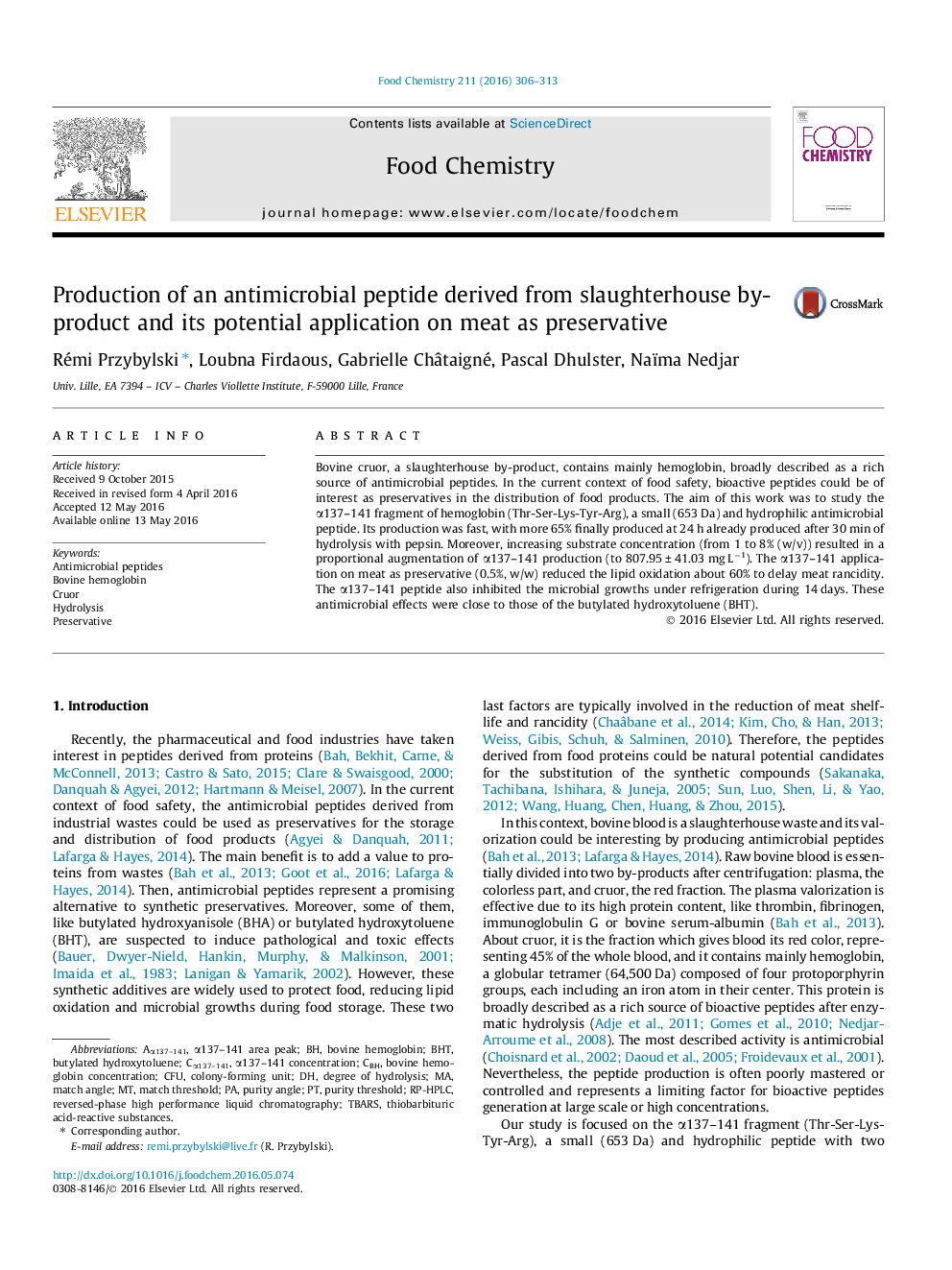| Article ID | Journal | Published Year | Pages | File Type |
|---|---|---|---|---|
| 7588003 | Food Chemistry | 2016 | 8 Pages |
Abstract
Bovine cruor, a slaughterhouse by-product, contains mainly hemoglobin, broadly described as a rich source of antimicrobial peptides. In the current context of food safety, bioactive peptides could be of interest as preservatives in the distribution of food products. The aim of this work was to study the α137-141 fragment of hemoglobin (Thr-Ser-Lys-Tyr-Arg), a small (653 Da) and hydrophilic antimicrobial peptide. Its production was fast, with more 65% finally produced at 24 h already produced after 30 min of hydrolysis with pepsin. Moreover, increasing substrate concentration (from 1 to 8% (w/v)) resulted in a proportional augmentation of α137-141 production (to 807.95 ± 41.03 mg Lâ1). The α137-141 application on meat as preservative (0.5%, w/w) reduced the lipid oxidation about 60% to delay meat rancidity. The α137-141 peptide also inhibited the microbial growths under refrigeration during 14 days. These antimicrobial effects were close to those of the butylated hydroxytoluene (BHT).
Keywords
Related Topics
Physical Sciences and Engineering
Chemistry
Analytical Chemistry
Authors
Rémi Przybylski, Loubna Firdaous, Gabrielle Châtaigné, Pascal Dhulster, Naïma Nedjar,
